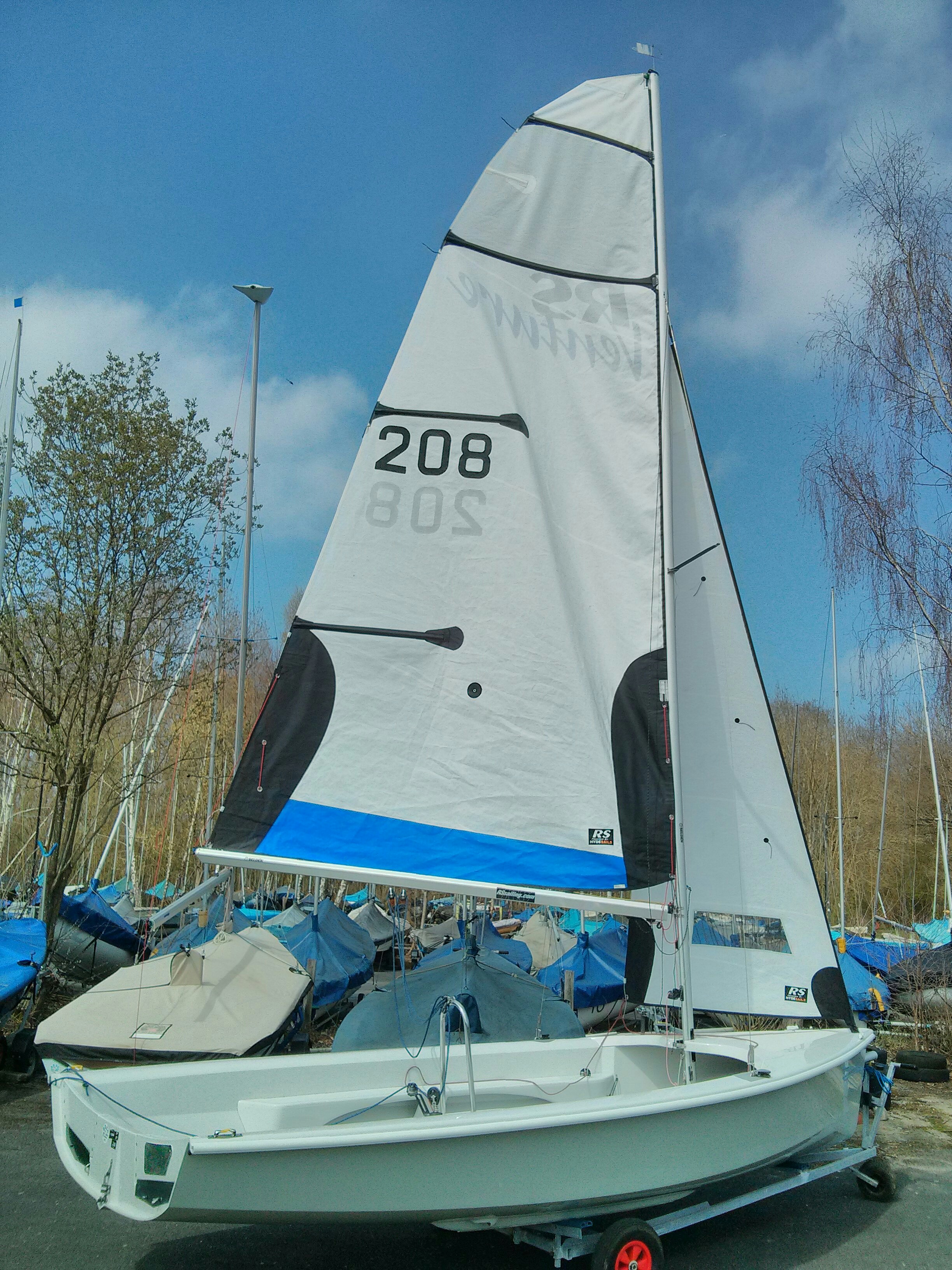
The RS Venture Trolley
- Wheels- The trolley is supplied with two standard plastic rimmed 8inch wheels. The tyre and inner tube size is 4.80 / 4.00 straight valve (TR13). The tyres as supplied are relatively light 2 ply tyres. These tyres are prone to sun damage and perish after a few years. The weight of the boat plus an outboard and other kit can cause tyres in poor condition to burst as the boat is drawn out of the water. A much better tyre is the standard light 4 ply trailer road tyre. The road tyre is much more resistant to sun damage and is very unlikely to burst under load. The wheels are retained either by a lynch pin or 'R' clip. 25mm washers need to be used to protect the plastic hubs from abrasion from the retaining clips.
- Boat supports- The boat supports consist of 'D' section rubbers riveted along galvanised steel cross members. The front supports are two 400mm lengths of rubbers. The rear supports are split into two 500mm lengths of rubbers. Replacement of all support rubbers requires a total length of 2.8m of 'D' section 30mm(w) x 20mm(h)rubber. Note that although bolts could be used to fasten new rubbers the use of rivets with stainless washers, offering a flat smooth upper surface will prevent damage to the boat and/or rubbers if the bilge keel contacts the head of a bolt.
- Jockey Wheel- The Venture is a heavy dinghy and when manoeuvring onto a sloping ramp the small standard jockey wheel does not readily change direction, requiring more strength to pull the boat into position. The so-called 'deluxe' jockey wheel has a handle that will match the height of the user and furthermore as the handle is pulled to one side the jockey wheel follows suit. Given the weight of the boat such a jockey wheel eases boat handling. However the wheel is small and must be kept at a good pressure (20 lb psi) to reduce friction.
- Loading Boat on to the Trolley - It is important that the boat is positioned centrally on the trolley, otherwise the support rubbers may be damaged and the boat structure strained if supported unevenly. This task is made easier by wrapping some bright coloured insulation tape around the ends of the rear support cross members. Position the tape approx 50mm outside the position where the outer keel bands will rest. As the boat is brought ashore the bright tape will show up and enable a person to centre the stern of the boat as it moves out of the water. Ensure the bow of the boat is snug to the bow rubber snubber. Use the tow rope in the tow ring to tie around the trolley handles so that the boat stays in position as the trolley is pulled out of the water.
Note that it is essential that the boat is tied securely to the trolley via the towing ring in the bow. The rope needs to be in good condition because if it fails the boat will be able to slide off the rear of the trolley.
- Loading the Trolley - The trolley may be loaded onto the road trailer manually by two persons but using the winch makes the task easy for a single person.
Start by aligning the boat and trolley with the road trailer. Remove the jockey wheel and pull the trolley onto the trailer roller. Release the winch locking lever and unwind the winch strap. Couple the winch hook onto the rope tied onto the bow tow ring (the hook will not fit directly into the ring). Commence winding in the winch, keeping the strap flat and central as it returns to the winch. Take care to ensure that the trolley does not foul the trailer mudflaps. By this means the trolley can be fully loaded onto the trailer. Finally secure the trolley onto the trailer by inserting the locking lynch pin into the retaining stud on the trailer.
- Cleaning the Trolley - Both the Trolley and the Trailer are constructed of heavily galvanised steel but the trolley may be subject to immersion in corrosive sea water that will rapidly attack the zinc in the galvanising, this is evidenced by a white powdery covering appearing on the frame. It is essential that the trolley is hosed down with fresh water, including inside the tubing, as soon as possible after being brought ashore from salt water. If this is not done the trolley frame will show early signs of corrosion after only 18mths. If corrosion does appear it can be removed with any acid from Lemon juice to kettle descaler and then the metalwork thoroughly washed. If necessary spray painting with a cold galvanising paint is very effective.
